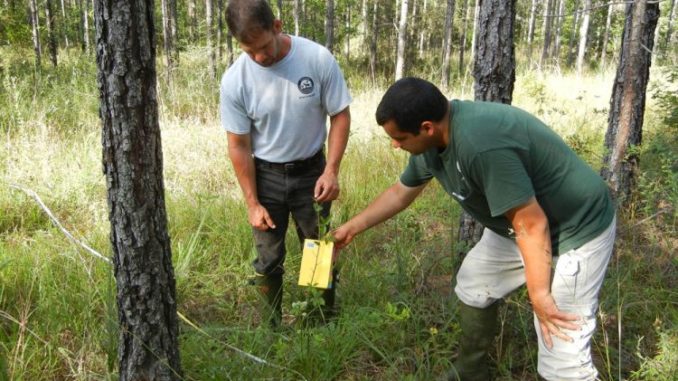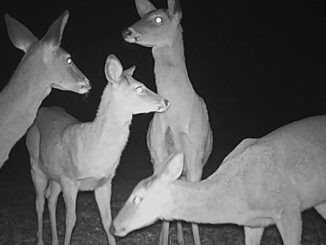
A line from a Mark Chesnutt song goes: “It’s too hot to fish, and too hot for golf and too cold at home.” I have an amen for his estimation of the current fishing and golf conditions, and am happy to report good weather at home. But when it’s too hot to do much of anything else, I start thinking about what can be done to prepare for hunting season. Let’s take a look at some summer work we can do now that will improve chances for success later this fall.
How about a browse survey?
Our hunting lease is enrolled in the Deer Management Assistance Program (DMAP). Last season our deer harvest was low compared to previous years. Members of the lease reported seeing fewer deer, and even more concerning was the harvest of very few mature bucks. Our buck harvest criteria are designed to allow bucks to reach 4 ½ years of age or older. It has worked well for several years, but few “shooters” were seen last season — which led to a discussion with Louisiana Department of Wildlife and Fisheries deer biologists.
A late-June browse survey was suggested, and we spent an interesting day on the lease conducting the survey and making observations on quality and availability of browse. The biologists offered suggestions for habitat improvement and harvest recommendations. As of this writing, we don’t have survey results yet — but without a doubt the data will help us better manage the deer herd.
A formal survey is great, but most of us can get an idea about how well the deer are doing by making our own observations. By simply taking morning and afternoon rides in the pickup and slowly cruising open areas, we can spot browsing deer. Bring a good pair of binoculars and look for fawns. Check out antler growth and development on any bucks spotted, and place some game cameras on feeders or browsing areas. Make note of where mature bucks are seen. During archery season, chances are that buck won’t be far from where it spent the summer.
And keep an eye out for turkeys as well, and get a count on poults. Pass that information along to LDWF’s Private Land Management Assistance Program biologist in your area. The information will help with overall turkey management, and the biologists can provide technical assistance to improve turkey habitat on your land.
Nuisance animal control
Way back in the late 70s when I began my career at LDWF, nuisance animal control was one of the federally-funded activities we were encouraged to perform on public land — and to document on our daily time and activities report. During the dog days of summer, we did not find very many people fishing or doing much of anything else requiring our attention. So it was a good time to patrol wildlife management areas and address the coyote, armadillo, nutria and beaver problems.
Those nuisance and outlaw quadrupeds are still out there, along with plenty of feral hogs. And the summer months are a great time to focus on the problem. We need not worry about disturbing other hunters, and coyotes and pigs are less wary and easier to stalk than they will be during hunting season. Just remember to renew hunting licenses, don’t shoot from public roads and confine hunting to private land with landowner permission.
Trespassing
We do not have a great deal of trespassing on our hunting lease, and for that I am thankful — but we do have some. Most of it involves OHV and ATV riding. The offenders usually gain access by cutting fences or finding little-used trails leading into the property from nearby residences. It is no surprise that most of the trespass occurs in the summer when no one is hunting and there is little chance of getting caught.
So it’s a good idea to patrol during the summer and look for tracks or other evidence of trespass. We may not catch the offender, but we can usually follow tire tracks and trails to entrance and exit points. Then camera surveillance can be set up for identification, or the trail can be blocked and no trespass signs posted. Whatever preventative measures you choose, now is the time to address the problem. Don’t wait for it to get worse, and be sure to notify your local wildlife agents and sheriff’s deputies about the problem.
Use caution and good judgement when confronting trespassers, and don’t even think about any citizen’s arrest ideas. Get names or other identifiers, and photographs if possible, and let law enforcement take it from there.
Long hot summer days are not nearly as enjoyable as cool, crisp autumn mornings. But we can do things now to make those sportsman’s paradise mornings even better.


